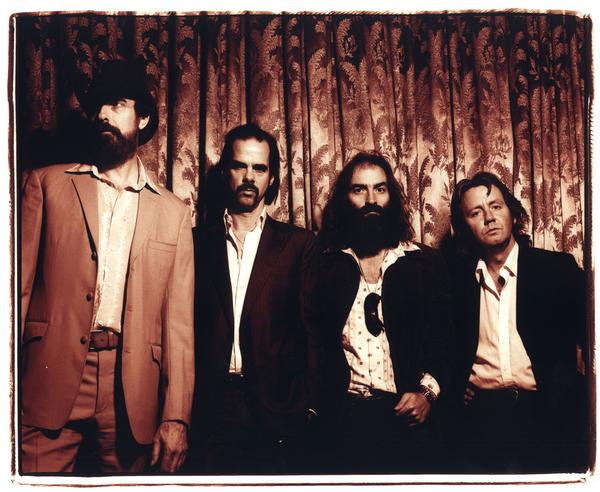FAULT Featured: Grinderman
“The ‘story’ as such was distilled from Nick’s random utterances, ad-libbed lyrics and spontaneous outbursts during the initial improvised sessions.”
.
.Read Grinderman’s full interview in FAULT SS/11 Out Now
FAULT: What was the most challenging aspect of Grinderman 2?
Grinderman: The most challenging aspect of Grinderman 2 was figuring out just exactly how we could really challenge ourselves – ‘the way forward’, as it were. We could have easily made another album that sounded just like the first album, but we didn’t want to. We needed to come up with something that felt right, not merely novelty for novelty’s sake, but something that really convinced us that we were evolving. Fortunately, clues as to the way forward were already there in the raw material of the earliest album sessions — it just took a little while to recognize them.
FAULT: Where did the Grinderman 2 story evolve from?
Grinderman: The ‘story’ as such was distilled from Nick’s random utterances, ad-libbed lyrics and spontaneous outbursts during the initial improvised sessions. He embellished and refined the ideas and characters as the album progressed. It’s not a strictly linear narrative, though its contours resemble one. It’s a set of images that unfold with a sort of mythopoeic dream logic.
FAULT: Have you read reviews…what do you think?
Grinderman: I do read the reviews, and although I find it gratifying when the writer ‘gets it’, it’s usually only the bad reviews that I tend to remember.
FAULT: Do you have a personal favourite song or do you see them as a whole piece of cohesive work?
Grinderman: Before the album was completed, it was as a collection of separate songs. Some I favoured and others I didn’t like quite as much. But by the time the ‘Heathen Child’ video was finished and the final bit of album artwork was ready to go, I no longer heard the songs as separate entities: the album had become an intricate holistic kaleidoscope of beauty and grotesquery.
FAULT: What’s the best thing about working together?
Grinderman: As with the first Grinderman album, sessions for Grinderman 2 began with an empty slate, a blank canvas. When we first enter the studio, it’s open season. We play together for hours and hours and for better or worse, it all gets recorded. By day three of the session, delirium truly takes hold, and things start getting interesting. You might occasionally find yourself venturing out on some limb normally considered pretty un-cool; but the utterly shameless, reckless, ill-advised musical escapade is sometimes more exciting and naughty and inspiring than one’s more considered efforts and can lure you into places where creatively you wouldn’t ordinarily stray.
FAULT: The album artwork and the videos are amazing. How did you develop such a stylised look?
Grinderman: These days an album can be so much more than a collection of songs with a cover. Digital technology has turned out to be a Pandora’s Box, wrecking havoc on the business side of things, but on the plus side, digital has begotten all these new options for creative expression.
FAULT: do you think music videos are still important?
Grinderman: Music videos have never been important to me; but in the right hands they can at least be interesting.
FAULT: Are you creatively involved in them?
Jim: All the members of Grinderman are creatively involved. Director John Hillcoat is an inspiring collaborator and is brilliant at realising ideas. His and Nick’s work together over the years has been truly exceptional.
FAULT: Are you inspired by new music?
Jim: Yes, but I won’t be dropping any names.
FAULT: You work together on other projects; how do you differentiate between them?Do you have a different work method?
Grinderman: The main difference between the work method of Grinderman and the work method of Nick Cave & the Bad Seeds lies in the numbers. Grinderman is a smaller unit which lends itself to intuitive spontaneous interaction between the musicians. The fewer members there are in a band, the easier it is to get together, the easier it is to be flexible and the more room there is for indulgence. The Bad Seeds on the other hand, being historically a larger band, benefits from a bit more orchestration and overall restraint.
FAULT: What is your proudest moment of 2011 so far?
Grinderman: I’m not proud of anything, but I stand by my work.
FAULT: What is your FAULT?
Grinderman: My fault is also my gift: I can always see the other side, even when I don’t want to.
www.grinderman.com
